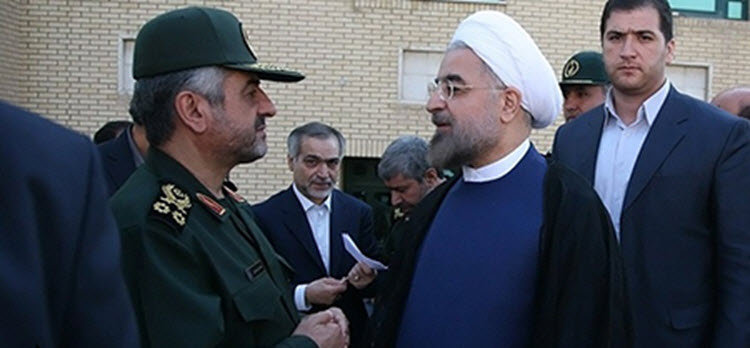
Iran’s economy has undergone a so-called ‘privatization’ for a number of years. The ‘privatization campaign’ as it is called, began with a turn of events that occurred in 2005. Mahmoud Ahmadinejad had become the regime’s president, and the executive branch was filled with loyalists who agreed with Khamenei’s strategic blueprint for the future.
Oil revenues were rapidly increasing, and Khamenei saw the opportunity to restructure Iran’s economy. Shortly after Ahmadinejad came to office, in May, 2005, the first official order was issued for the purpose of placing 80% of all economic enterprises under the supervision of “non-government public, private and cooperative sectors,” to be completed by the end of 2009.
In an article by Amir Basiri, Iranian human rights activist for Forbes, he says that in reality, what this has meant for the Iranian people, is that the office of Irani Supreme Leader Ali Khamenei and the Revolutionary Guards (IRGC) have been quietly taking control, as well as influence, over Iran’s natural resources and business enterprises.
“These enterprises included airlines, banks, foreign commerce, insurance companies, large mines, power generation, posts, roads and shipping companies. Most important of all were primary industries including the likes of downstream oil and gas entities. Estimates indicate a whopping $12 billion in shares were handed over from 2005 to 2008,” writes Basiri, and he adds, “Khamenei’s office and its network of entities were enjoying the main portion of such transfers. This included the all-powerful “Setad Ejraiye Farmane Hazrate Emam” Headquarters for Executing the Order of the Imam, in reference to regime founder Ruhollah Khomeini. Iran’s armed services and the notorious foundations were also receiving their share.”
According to Basiri, to understand the impact one must consider the fact of the control exerted over these institutions in terms of decision-making processes, intelligence gathering mechanisms, legislative methods and unprecedented access to budgetary commitments of significant proportions. This has resulted in financial ‘mini-empires’ that have been transformed into the main players and decision makers for Western companies who wish to do business with Iran.
A new report, “Rise of the Revolutionary Guards’ Financial Empire: How the Supreme Leader and IRGC Rob the People to Fund International Terror,” was recently published by the U.S. office of the National Council of Resistance of Iran (NCRI) It highlights the control gained by Khamenei, the IRGC or their associates on direct or indirect control of 14 different economic super-hubs.
An investigation by Reuters revealed that a little-known organization called Setad, is one of the keys to Khamenei’s power, and now holds stakes in nearly every sector of Iranian industry. The Setad has holdings valued at $95 billion, according to Reuters.
The result is that Khamenei’s office and the IRGC control of at least 50% of Iran’s GDP.
Basiri asks, “And where is the destination of this enormous revenue?” His answer:
• the ongoing conflict in Syria;
• terrorism, extremism perspectives and fundamentalism in Iraq;
• fueling the Houthis and plunging Yemen further into war;
• the hundreds of billions poured into Iran’s highly controversial nuclear program;
• the wide range of ballistic missiles threatening the entire region and Western interests;
• a vast security apparatus instructed to inflict severe domestic crackdown on the country’s powder keg society;
• and spreading the regime’s mentality of Islamic fundamentalism across the globe.
Tehran is allocating a surprising $15-20 billion to finance the ongoing carnage in Syria, with at least $1 billion set aside only for proxy militia salaries, according to a comprehensive study. Additionally, IRGC Quds Force chief Qassem Suleimani also pours billions into Iraq to provide for Shiite militias. Another $1 billion is channeled to the Lebanese Hezbollah and $1.3 billion to Hamas.
Western companies believe that it’s in their interest to interact with Iran’s private sector, but they don’t realize is that the ‘official’ banks and firms in Iran are IRGC controlled. Iran’s economy is managed by the same figures who repress the Iranian people, and export extremism and terrorism. To do business with Iran is to do business with Khamenei, and the IRGC.
The Trump Administration has an opportunity to take away the IRGC’s resources, therefore limiting its profit-making and operations-funding terrorism, by blacklisting the IRGC as a foreign terrorist organization. This important and strategic initiative has bipartisan support in Congress.







